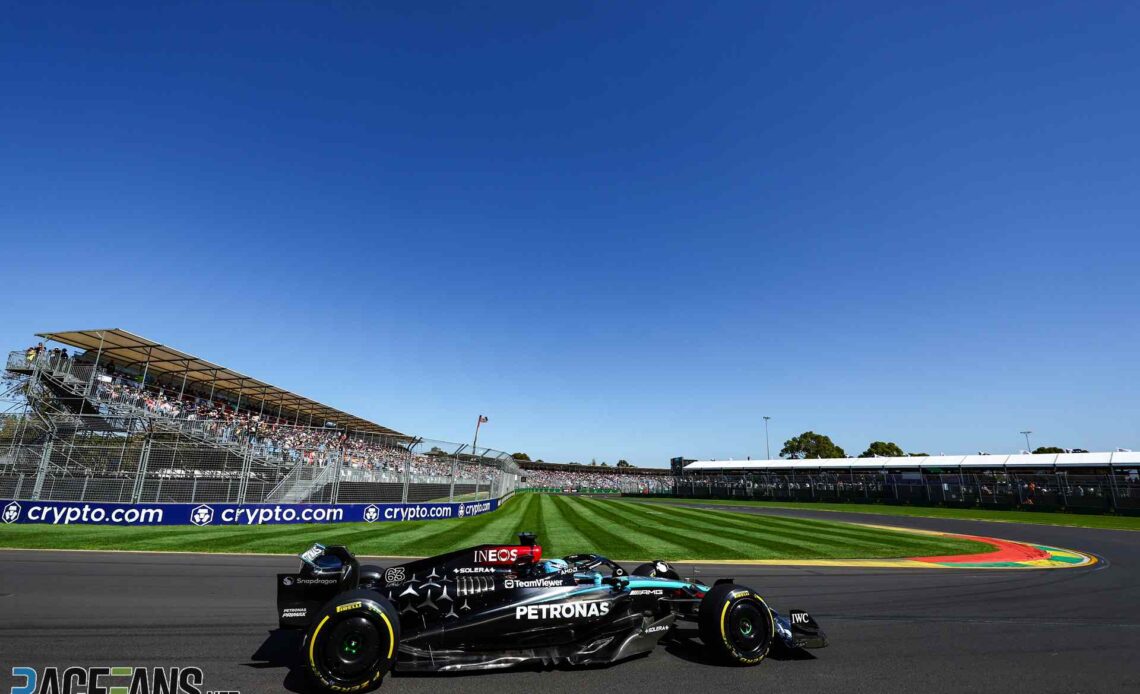Mercedes say their poor weekend in Australia gave them some insight into why their W15 isn’t performing well.
The team failed to score last weekend as Lewis Hamilton retired with a power unit problem and George Russell crashed out of seventh place on the penultimate lap.
Their car’s performance up to that point was a cause for concern as Russell only qualified seventh and Hamilton failed to make the cut for Q3. The team looked more competitive in the final practice session, where both drivers appeared in the top five, and technical director James Allison said that indicated one cause of their problems.
“Almost no set-up changes occurred between FP3 and qualifying,” he explained in a video published by the team. “We take fuel out, of course, we turn the engine up to 11, all those things. But no significant difference on set-up because we felt we got the car in a decent window in FP3 and that was reflected in the time sheets.
“But we are starting to see a pattern emerge in that most weekends we have a period in the weekend where we are feeling good about the car, confident about the car, but then in the ‘paying’ sessions, in qualifying and the race, that slips through our fingers.
“If we were trying to draw that pattern together then probably the strongest correlation that we can make at the moment is that our competitiveness drops when the track is warm, when the day is at its warmest and therefore the tyre temperatures rise with those of the track. The times when we have been at our best have been all in the sessions which are the coolest and so that gives us some clues about what we need to do as we move forward from here.”
The team will be able to address this partly through changes in set-up, but Allison said they may also have to consider design tweaks to the W15.
“If you know what you’re shooting for, if you’ve identified correctly an accurate assessment of why our competitiveness waxes and wanes, then you can work into the weekend a programme that is dedicated towards trying to move the temperature and the temperature balance front to rear in your favour using all the conventional set-up tools on the car. That work you can do back here in the factory and the simulation and so on.
“But if you conclude, having exhausted the degrees of freedom that you have available to you in set-up terms, that you still need to go further, well then that gets harder at that point because that will be that there are underlying characteristics in…
Click Here to Read the Full Original Article at RaceFans…

